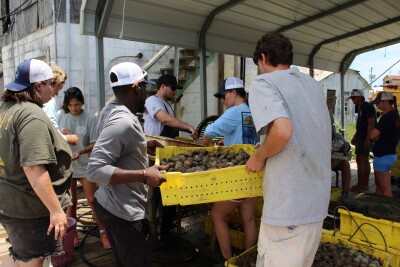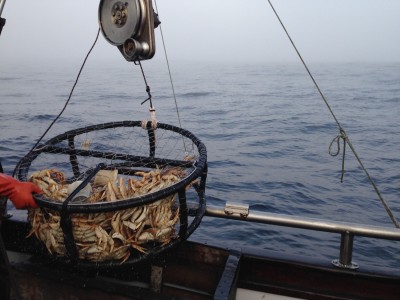Landings data go just so far
How come we haven't seen this one in the New York Times?
A study released in mid-February by the National Academy of Sciences finds that the use of fishery landings data "can lead to faulty interpretations about the condition of fishery ecosystems."
Among other things, this new study confronts the much ballyhooed 2006 prediction of researcher Boris Worm and others who suggested — based on catch data — that the world could run out of seafood by 2048.
The new study, by Kim de Mutsert and James H. Cowan Jr. of Louisiana State University and Timothy E. Essington and Ray Hilborn of the University of Washington, was published in the Feb. 19 issue of the academy's journal, Proceedings.
Say the authors: "The use of landings data without context leads to significant misunderstanding, spurious correlations, and erroneous predictions."
De Mutsert and company are not saying concerns about overfishing are unjustified. However, as we strive toward the ideal of ecosystem-based management, it is critically important, they remind us, that we employ reliable indicators of an ecosystem's status.
One popular indicator is the mean trophic level index.
An organism's trophic level is its rank in the food chain, with humans at the top and primary producers, such as phytoplankton, at the base.
The MTLI, therefore, measures changes in the trophic level of fishery landings. As such, a declining trophic level would seem to suggest that we are "fishing down the food web," as Daniel Pauly of the University of British Columbia likes to say.
The question is, is this necessarily the case? Research by de Mutsert and company based on landings data from the Gulf of Mexico and the Atlantic south of the Chesapeake indicate that it is not.
These data seemed to suggest that the two areas "were overfished and exhibited badly degraded food webs, as evidenced by a low initial trophic index and subsequent declines in the index over time."
However, the de Mutsert team observed that the predominant landings in these areas consist of shrimp (the gulf) and menhaden (representing the Atlantic), both of which feed at low trophic levels.
Using landings data from NMFS, the researchers found that the low trophic level indices were not a result of fishery-induced changes in the food web.
"In our reanalyses," the team said, "the low mean trophic level for the [Gulf of Mexico] actually resulted from large catches of two groups of low-trophic-level species, menhaden and shrimp, and the mean trophic level was slowly increasing, rather than decreasing."
And what about the use of landings data to predict fishery collapses, which Worm in 2006 defined as a reduction in landings of a species to 10 percent of any previous annual catch level?
It turns out that can be a shaky proposition as well, or to put it more positively, landings are but one reflection of a stock's health.
In the Gulf of Mexico, de Mutsert and his fellow researchers point out, some species, such as croaker and jack crevalle, "do not support directed commercial fisheries, so landings are sporadic and related to variability in effort, not population biomass."
Alternatively, some nominal "gulf" species — scallops and Nassau grouper, among others — have limited distribution in the Gulf of Mexico, "implying that removals can result in localized depletions and variable catches, but do not have much effect on a stock's health," the researchers contend.
Finally, they remind us that it is important to consider competing users, meaning recreational as well as commercial fishermen. Some gulf species, such as red snapper, are allotted equally to anglers and commercial fishermen; others, such as red drum, are off limits to commercial harvesters.
Using Worm's metric, the researchers point out, 80 percent of gulf species could be said to have collapsed between 1950 and 2001.
By contrast, de Mutsert and company took into account regulatory history, market forces and fishing effort and concluded that 21 percent of gulf species would have been deemed collapsed over the same period, and 8 percent as having recovered.
"Indeed," they write, "based solely on the 10 percent criterion, 72 [Gulf of Mexico] species have experienced a combined 98 collapses and recoveries since 1950, which... is unlikely to reflect real changes in population biomass at this spatial scale."
I learned of the study via the Houston Chronicle; the Society for Conservation Biology also reported on it in its magazine, Conservation.
A Google News search did not immediately turn it up anywhere else.
You can find it on the Proceedings Web site, www.pnas.org.
It will be time well spent. As Conservation suggests, "the debate surely isn't over."
Except in the New York Times.






